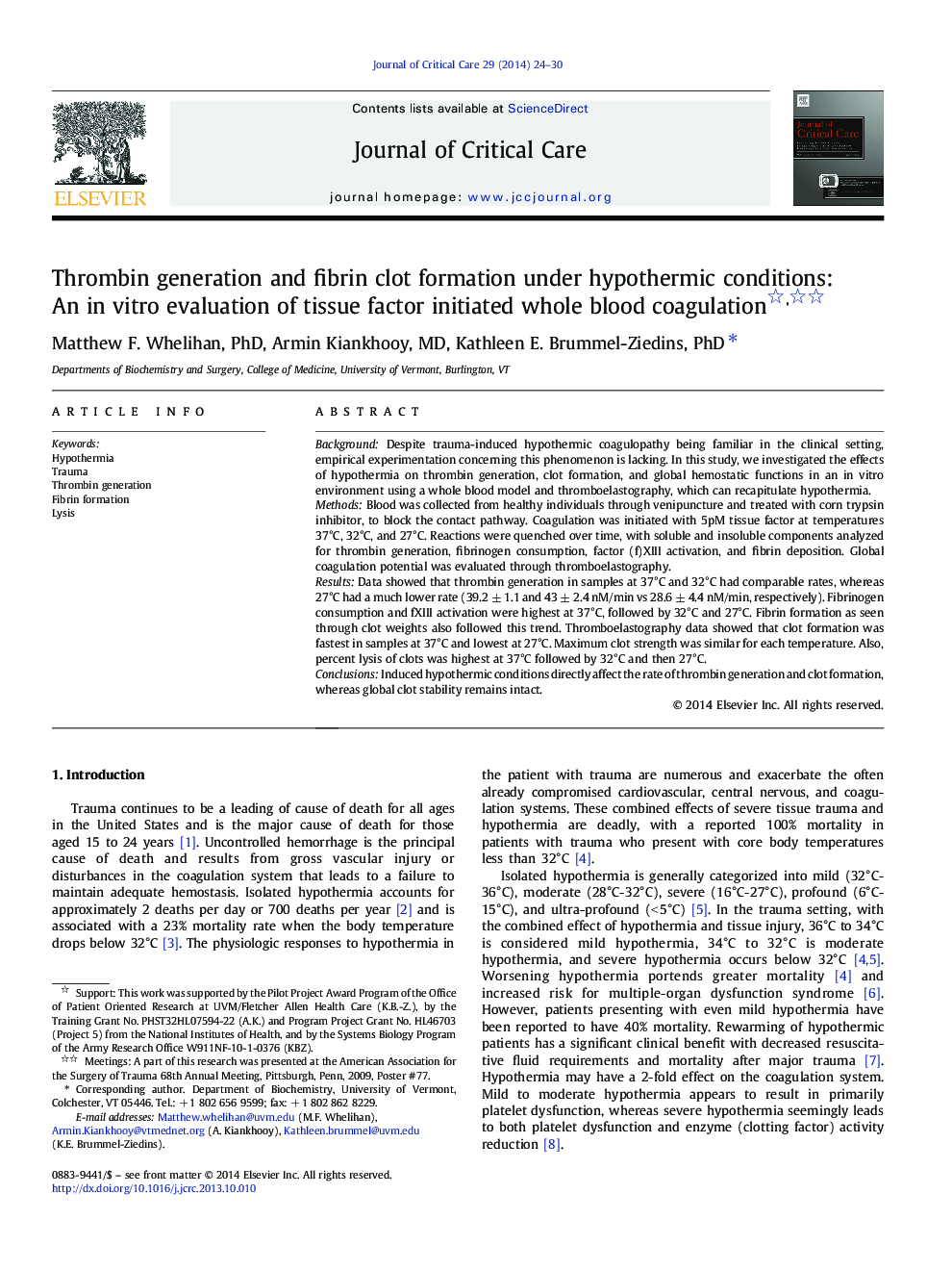| کد مقاله | کد نشریه | سال انتشار | مقاله انگلیسی | نسخه تمام متن |
|---|---|---|---|---|
| 2764649 | 1150934 | 2014 | 7 صفحه PDF | دانلود رایگان |
BackgroundDespite trauma-induced hypothermic coagulopathy being familiar in the clinical setting, empirical experimentation concerning this phenomenon is lacking. In this study, we investigated the effects of hypothermia on thrombin generation, clot formation, and global hemostatic functions in an in vitro environment using a whole blood model and thromboelastography, which can recapitulate hypothermia.MethodsBlood was collected from healthy individuals through venipuncture and treated with corn trypsin inhibitor, to block the contact pathway. Coagulation was initiated with 5pM tissue factor at temperatures 37°C, 32°C, and 27°C. Reactions were quenched over time, with soluble and insoluble components analyzed for thrombin generation, fibrinogen consumption, factor (f)XIII activation, and fibrin deposition. Global coagulation potential was evaluated through thromboelastography.ResultsData showed that thrombin generation in samples at 37°C and 32°C had comparable rates, whereas 27°C had a much lower rate (39.2 ± 1.1 and 43 ± 2.4 nM/min vs 28.6 ± 4.4 nM/min, respectively). Fibrinogen consumption and fXIII activation were highest at 37°C, followed by 32°C and 27°C. Fibrin formation as seen through clot weights also followed this trend. Thromboelastography data showed that clot formation was fastest in samples at 37°C and lowest at 27°C. Maximum clot strength was similar for each temperature. Also, percent lysis of clots was highest at 37°C followed by 32°C and then 27°C.ConclusionsInduced hypothermic conditions directly affect the rate of thrombin generation and clot formation, whereas global clot stability remains intact.
Journal: Journal of Critical Care - Volume 29, Issue 1, February 2014, Pages 24–30
